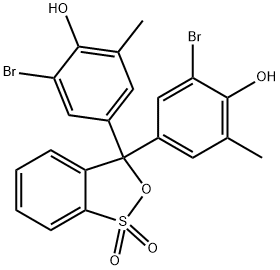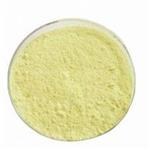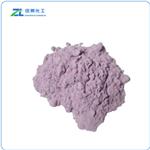Chemical Properties
Crystalline
Uses
Bromocresol purple has been used as a pH indicator in the yeast culture media. It has been used as a pH indicator in the culture media of
Geobacillus stearothermophilus subsp.
Calidolactis.
Uses
As indicator, pH 5.2 yellow; pH 6.8 purple.
Uses
It is used as a pH indicator and to measure serum albumin concentrations. It is used as a pH indicator (5.2-6.8 : yellow to blue-purple) and also used in spectrophotometric determination of serum-albumin.
Definition
ChEBI: A member of the class of 2,1-benzoxathioles that is 2,1-benzoxathiole 1,1-dioxide in which both of the hydrogens at position 3 have been substituted by 3-bromo-4-hydroxy-5-methylphenyl groups. A hydrophilic dye that is used as a pH indicator and to measure
serum albumin concentrations.
General Description
Bromocresol purple is a pH indicator, which changes color from yellow (at low pH 5.2) to violet (above pH 6.8). It aids in determining the dead cell count for cells with plasma membrane damage. Bromocresol purple is widely used as a fluorescent stain in yeast cells. Cells with an intact plasma membrane are not stained, while damaged cells are seen as blue-grey ghosts.
Biochem/physiol Actions
Bromocresol purple is a pH indicator which changes color from yellow (at low pH 5.2) to violet (above pH 6.8). It is mainly used as a fluorescent stain in yeast cells. It helps in dead cell count for cells with plasma membrane damage. Cells with proper cell membrane are not stained, while damaged cells are seen as blue-grey ghosts.
Purification Methods
Dissolve the dye in aqueous 5% NaHCO3 solution and precipitate it from a hot solution by dropwise addition of aqueous HCl. Repeat this until the UV/VIS-extinction did not increase at 419nm. It can also be recrystallised from *benzene. It is an indicator: at pH 5.2 (yellow) and pH 6.8 (purple). [Beilstein 19/3 V 460.]




